This op-ed discusses the important role of essential workers and how coming out of the pandemic, we can ensure their contributions are fully recognized and valued.
This report addresses worsening job quality during the COVID-19 pandemic, using data from the 2020 Great Jobs Survey and building on the 2019 Great Jobs report. Among other insights, the report addresses how COVID-19 had a differential impact on high wage versus low wage workers, how job quality before the pandemic predicted job quality changes during the pandemic, and how COVID-19 has created new job quality challenges, such as increased remote work.
In an engaging book, Beaten Down, Worked Up – The Past, Present, and Future of American Labor, veteran New York Times reporter Steven Greenhouse relates how working people organized to address similar challenges in the past, how the gains they achieved began to erode, and how working people today are again finding their voice. Like their predecessors, workers are uniting in common purpose to respond to today’s challenges and demand a better world of work for themselves and for future generations.
Enjoy this conversation with one of the nation’s leading labor reporters discussing the past, present, and future of work in America and the role of working people in determining that future.
This “train-the-trainer” curriculum is designed for workforce development staff to educate clients about their rights as workers and strategies for protecting those rights. Units include wage and hour regulations, hiring and termination, leaves of absence, discrimination on the job, worker health and safety, and worker organizing. Although the curriculum highlights regulations that are specific to Chicago, the curriculum can serve as a model for others across the country. In addition to workforce development practitioners, worker advocacy professionals may also find this curriculum useful.
While workers are granted basic protections against discrimination under the Civil Rights Act of 1964, these rights are not always enforced. This fact sheet provides a walkthrough of the Equal Employment Opportunity Commission (EEOC) filing process to take legal recourse against discrimination. Included are sections such as a description of your legal rights, information needed to file a charge, the investigation, the employer’s response, and mediation and settlement. This resource will be most useful for workers facing discrimination and their advocates.
In this paper, authors Karen L. Corman and Ryne C. Posey outline several key considerations for implementing a pay audit to assess pay disparities among current and incoming staff. Topics explored include the potential benefits and drawbacks of pay equity audits, the purpose and parameters of the audit, privilege considerations, practical guidance for conducting the audit, and post-audit considerations and remediation strategies. HR professionals and other individuals involved in conducting pay audits may find this resource useful. Additionally, those who work with employers may be interested in sharing this with their partners. You may access this downloadable document by clicking on the “PDF” symbol towards the top, right-hand side of the linked webpage.
Throughout history, courts have played a key role in interpreting and enforcing the rules that govern work, balancing the rights and interests of workers and those of the companies they work for. How courts strike that balance has changed over the years and has influenced the continuing evolution of the relationship between workers and employers.
In this event, we hear from legal and economic scholars and worker advocates about the critical role that courts have in setting the rules for the employer-employee relationship and the impact these decisions can have on individuals and the economy.
The “on-demand” or “1099” economy is reengineering how millions of Americans work, and California’s San Francisco Bay Area is at the forefront of these changes. Four members of the Bay Area team participating in the Communities that Work Partnership (CTWP) set out to understand this challenge and explore how the public workforce development system—the one-stop job centers, community colleges, and publicly funded community-based training programs—could meet the skills/needs of freelancers, and the businesses that hire them, in the region’s 1099 economy.
This event discusses the dynamic of retail during the holidays, which are a critical time for retail companies and workers. The National Retail Federation anticipates that holiday sales this year will make up approximately 19 percent of the retail industry’s annual sales of $3.2 trillion. Holiday spending also impacts the paychecks, schedules, and work-life balance of the 15 million retail workers in the United States, who make up more than 10 percent of total US employment. For these workers, the holidays often amplify year-round job stress they already face, including stress caused by unpredictable and changing work schedules, on-call shifts that may not materialize, and unexpected early dismissals. Unstable schedules — combined with other common workplace conditions like lack of paid leave, low wages, and little investment in workforce training — reduce employee engagement and contribute to high turnover and job instability.
The Future of Work for Low-Income Workers and Families is a policy brief aimed at state policy advocates and policymakers seeking to help low-income workers and their families secure healthy economic livelihoods as the nature of work evolves in the United States. Published by the Working Poor Families Project in December 2015, the brief was written by Vickie Choitz and Maureen Conway. This brief reviews the major forces shaping the future of work, including changes in labor and employment practices, business models, access to income and benefits, worker rights and voice, education and training, and technology. Across these areas, we are seeing disruptive change in our economy and society resulting in increasing risk and challenges for low-income workers, in particular.
